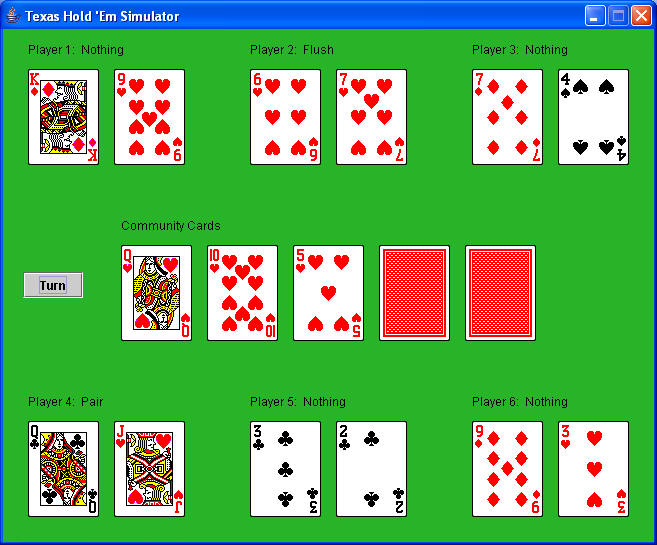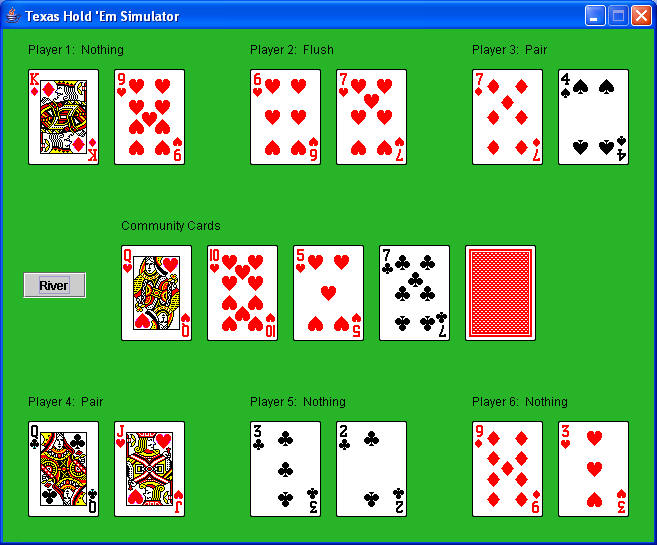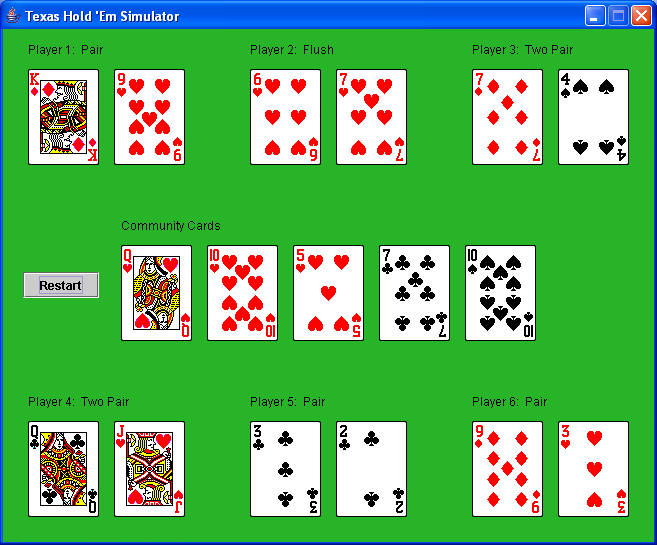
We are not going to explain all of the details involved with playing "Texas Hold 'Em", but we'll tell you enough to understand what is happening when you run your project.
Several players sit around a table. Each player gets two cards. (Normally players cannot see each other's cards, but in our project all of the players' cards are visible to the person running the program.)
After cards have been dealt to the players, three cards are revealed in the middle of the table. These three cards are called "The flop". Strange as it might seem, the players share these three cards. We refer to shared cards as "community cards". When a player evaluates his hand, he combines the two cards he is holding with the collection of community cards. So after the flop has been dealt, each player controls a five card hand -- the players can now evaluate their hands using the usual poker rankings. To see how this works, please take a careful look at the screen-shot below (taken from a typical run of your project):

At this point, to decide what hand ranking each player holds, you must imagine that each player is holding his two cards together with the three community cards. For example, player 4's hand consists of the following cards:





As you can see, at this point player 4 is holding a Pair of Queens.
Player 2 is holding a very high ranking hand! At this point, his cards (including the community cards) are:





As you can see, player 2 has a flush.
After the flop, the dealer reveals yet another "community card". This card is called the "turn card". Again, each player evaluates the rank of his hand by combining the cards he is holding with the community cards. That gives each player 6 cards. (As described on the "Poker Hands" page, the rank of the player's hand is found by considering all 5-card subsets and determining which 5-card subset is the best.) Take a look at the screen-shot below, which shows the situation just after the Turn card (the seven of clubs) has been revealed:

Notice that the turn card (the seven of clubs) has improved the hand of player 3. At this point, player 3's cards are (combining the cards he holds with the community cards):






So player 3 now holds a "pair of sevens".
Finally, the dealer reveals the last common card, the "River Card". As before, players augment the cards they are holding with the entire collection of community cards. Below is the situation after the River Card, (the 10 of Spades) has been revealed:

Notice that most of the players' rankings have improved! Why is this? The set of community cards now contains two tens! Since every player uses these cards as his own, that means that at this point all player hands are ranked as at least a "Pair".
Before you begin your project, please study the screen-shot above carefully and be sure that you understand how the ranking for each player was computed. If you have any doubts at all, please drop by office hours!